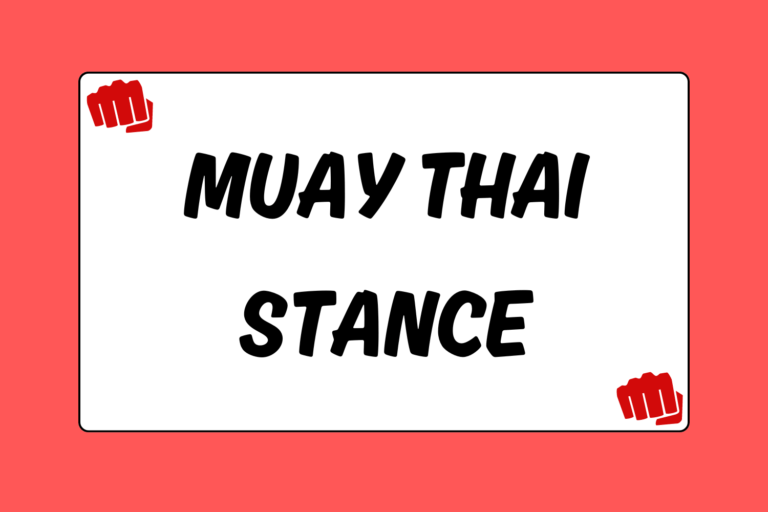#
10-point must system – The most common method of scoring fights. This system awards 10 points to the winner of a particular round, and 7-9 points to the loser.
A
Academy – A place where fighters train. This term is typically associated with places where Brazilian jiu-jitsu is practiced.
Ankle lock – A technique that requires the control of an opponent’s leg/ankle in order to manipulate the ankle to force the opponent to submit.
Arm bar – A technique that requires the control of an opponent’s arm in order to manipulate the elbow to force the opponent to submit.
Arm lock – A technique that requires the control of an opponent’s arm in order to manipulate the shoulder or elbow to force the opponent to submit.
Athletic commission – An organization authorized under law to regulate professional mixed martial arts matches and other sports events. Each individual state in the United States has its own athletic commission.
B
Bantamweight – The weight class that contains fighters with a maximum weight of 135 pounds/61 kilograms.
Base – The term used to describe a strong and stable position.
Belt – This can refer to one of two things:
- The area between the belly button and hips where it is deemed illegal for a punch to land.
- A decorated accessory worn around the waist of the champion of a weight class.
Body fat – Loose connective tissue that is composed of specialized cells that store energy in the form of fat.
Bout – Also known simply as a “fight,” this is a competition between two fighters.
Brazilian jiu-jitsu – A martial art developed by the Gracie family that uses the fundamentals of traditional jiu-jitsu and judo. Brazilian jiu-jitsu emphasizes grappling and submission techniques with little to no emphasis on offensive striking.
C
Cage – An enclosed area where fights take place. Cages are often chain-linked and covered with some type of plastic coating to help protect the fighters.
Camp – A group of individuals, or several different groups of individuals, who help prepare a fighter for an upcoming bout. Fighters may travel to several locations as a part of a camp, or bring fighters and coaches from other teams into their gyms to help train for an upcoming fight.
Carbohydrate – An organic compound that is a major energy source for the human body.
Cardio equipment – A piece of equipment that has a sole purpose of improving the body’s circulatory and respiratory systems.
Catch weight – This refers to a weight between two weight classes that fighters agree upon prior to an upcoming bout. Catch weights usually come into play when fighters primarily fight in two different weight classes.
Chain fighting – A series of techniques performed with each separate movement setting up the next technique or hold.
Championship rounds – This term is used to describe the fourth and fifth rounds of a fight to decide a title or championship; a non-title fight is typically only three rounds.
Clinch – The term used to describe the grappling position of fighters while they are standing. One or both fighters will use their arms in order to control their opponent. Both grappling and striking techniques may be utilized out of the clinch.
Control – The term used to describe the fighter who is in a position to maintain power over his opponent.
Cut – This term has two meanings in mixed martial arts:
- An abrasion to the skin of a fighter’s face.
- The process of cutting or losing weight.
Cut man – The member of a fighter’s team who takes care of cuts, nosebleeds, and contusions in between rounds.
D
Dehydration – The depletion of water from the body.
Dirty boxing – The term used to describe striking an opponent from the clinch. The term was coined because it is illegal for boxers to strike one another when tied up.
Disqualification – The elimination of a competitor in a fight due to a violation of a specific rule.
Double-leg takedown – A wrestling technique in which a fighter uses both arms to engage his opponent’s legs in order to take him to the mat.
Draw – The result of a fight that is tied by the judge’s score and does not have a decisive winner.
F
Featherweight – The weight class that contains fighters with a maximum weight of 145 pounds/66 kilograms.
Fight record – The accumulation of wins, losses, and draws a fighter acquires throughout his/her career.
Fight team – The group of individuals that a fighter trains with.
Fish hooking – The act of inserting fingers into an opponent’s mouth or nostrils. This is illegal in mixed martial arts.
Flat – This is a negative term to describe a fighter’s inability to perform. “Fighting flat” may be used to describe the inability to react or generate offense. For example, you may hear “He came out flat in that fight and couldn’t get his strikes going.”
Flyweight – The weight class that contains fighters with a maximum weight of 125 pounds/57 kilograms.
Full guard – The position when a fighter is flat on his back with his legs tightly wrapped around his opponent’s midsection with his legs or feet locked.
Full mount – A position in grappling where a fighter is straddling his opponent’s torso with both legs on either side of his body. This is the most dominant position in grappling.
G
Gassed – This is a common term in mixed martial arts to describe a fighter’s energy level, typically used to describe the lack thereof. Fighters often say, “Look at him, he’s gassed out. He’s barely moving.”
GNP – An abbreviation for “ground and pound.” See Ground and pound.
Grappling – A general term used to describe the combination of wrestling and jiu-jitsu techniques or maneuvers. Grappling typically involves techniques that involve leverage and positioning with no striking involved.
Greco-Roman wrestling – A traditional style of wrestling popular around the world. Rules allow only upper-body attacks.
Ground and pound – A strategy where fighters take their opponents down and inflict damage from the top position with strikes.
Guard – The position when a fighter is on his back with his opponent on top of him.
Guillotine choke – A type of choke applied to a fighter who is secured in the front headlock position. Here, his opponent uses his forearm to apply pressure upward to the fighter’s neck in order to force him to submit.
H
Half guard – A guard position where the fighter on the ground keeps or hooks one leg in between his opponent’s legs in order to control him.
Heavyweight – The weight class that contains the competitors heaviest in weight: 265 pounds/120 kilograms.
Hydration – The level of water in one’s body.
J
Judge – An official who is in charge of scoring fights based on specifically determined criteria. There are usually several judges who sit on the panel for a specific fight.
Judge’s decision – The result of a fight that goes the entire duration of all rounds in regulation. Judges must designate one fighter as the winner of the bout by using a previously determined judging criteria and/or scoring system.
K
Knockout (KO) – The result of a fight when a fighter cannot continue due to loss of consciousness.
L
Lead leg – The leg that is forward in a staggered stance.
Light Heavyweight – The weight class that contains fighters with a maximum weight of 205 pounds/93 kilograms.
Lightweight – The weight class that contains fighters with a maximum weight of 155 pounds/70 kilograms.
M
Main event – The bout at a mixed martial arts event with the most highly profiled fighters. The main event is usually the last bout.
Middleweight – The weight class that contains fighters with a maximum weight of 185 pounds/84 kilograms.
MMA – Abbreviation for mixed martial arts.
Mount – A position in grappling where a fighter has passed his opponent’s guard and is controlling him from the top position.
Mouthpiece – A piece of rubber worn in a fighter’s mouth to protect the teeth and absorb shock to the head.
Muay Thai clinch – A common technique taken from Muay Thai where the attacking fighter takes control of his opponent behind his head with both arms in order to attack him using strikes (most commonly from the knees).
Muscle endurance – The term used to describe the ability to maintain muscle strength for an extended period of time.
N
NHB – See No Holds Barred.
No contest – This describes the result of a fight that ends before the scheduled duration. The result excludes knockouts and technical knockouts. In most cases, an unintentional foul will have occurred and caused a severe injury to one of the fighters. In other circumstances, an instance will have occurred that was out of the fighter’s control to prevent the fight from continuing. In either of these circumstances, the fight will be stopped and considered no contest, meaning the fight is not added to either fighter’s record.
No holds barred – The term used to describe early mixed martial arts competitions. This term was coined because there were very few rules or regulations in early MMA.
Number one contender – The fighter considered second best in his/her weight class and is eligible to fight the champion.
O
Official – See Referee.
Open guard – The position when a fighter is flat on his back without having wrapped his legs around his opponent’s midsection.
Open weight – A weight class with no maximum or minimum weight limit.
P
Parrying – Using the hands (and sometimes arms) to deflect incoming punches.
Pluhm clinch – See Muay Thai Clinch.
Promotion – An organization that hosts mixed martial arts events.
Pull guard – The action when a fighter pulls or attacks an opponent in such a way that he puts himself underneath his opponent to get into the guard position. This is done when a fighter wants to engage his opponent in grappling.
R
Rash guard – A tight-fitting piece of clothing used to prevent rashes, skin disease, and other injuries.
Referee – The individual designated to interpret the rules and keep order during a fight.
Ring – A platform enclosed by ropes where mixed martial arts fights take place.
Round – One of a series of periods in a fight. For professional MMA bouts, each round is typically five minutes in duration, with typically no less than three rounds in total.
Rubber match – A fight to decide who the better fighter is between two fighters who have previously fought and beaten each other.
S
Side control – A grappling position in which a fighter is on top of his opponent and positioned along the side of his body, perpendicularly.
Side mount – See Side control.
Spike – Any attacking move that is perceived as being an intentional attempt to slam an opponent’s head into the mat. Spiking is an illegal move in mixed martial arts.
Split decision – This occurs when the majority of judges find one fighter the winner while the minority finds the other fighter the winner. The fighter who receives majority rule will be the winner.
Sprawl – A technique used to defend a takedown. The defensive fighter kicks his legs back in order to put pressure on the attacking fighter with his hips and to prevent himself from being taken down.
Square stance – A type of fighting stance where both of an individual’s legs are aligned without a lead leg. This is typically a defensive stance.
Striker – A fighter who is especially skilled in striking techniques, such as punching, kicking, etc.
Submission – The result of a fight when a fighter concedes defeat or gives up.
Super heavyweight – The weight class that contains competitors who weigh over 265 pounds/120 kilograms.
T
Takedown – The action that occurs from the standing/neutral position when an opponent is taken down to the mat and controlled.
Tap out – The action of tapping an opponent’s body or the mat to signal submission, or that a fighter has given up. This is typically done with a fighter’s hand, but fighters may also verbally tap out.
Technical knockout (TKO) – The result of a fight when the referee determines that one fighter cannot adequately defend himself or is in danger of serious injury.
Throw in the towel – When a member of a fighter’s corner throws in a white towel, it is to signal submission. The fight is stopped and the fighter loses by technical knockout.
Tie/Tie-up – A technique where one or both of a fighter’s arms are used to control the position of an opponent.
Title contender – A fighter who is deemed eligible to challenge the champion of a particular weight class.
Tournament – A type of competition in which multiple fighters can enter. Winning fighters advance to the next round and only face fighters who have also won their previous bouts. Tournaments may take place in one day or over the course of several days.
U
Unanimous decision – A decision made by the judges in which all judges agree on the same winner.
Undercard – Fights preceding the main event.
Underhook – A type of tie where the attacking fighter hooks his arm underneath his opponent’s arm in order to set up an offensive maneuver.
W
Weight class – A division that categorizes fighters by body weight.
Welterweight – The weight class that contains fighters with a maximum weight of 170 pounds or 77 kilograms.





